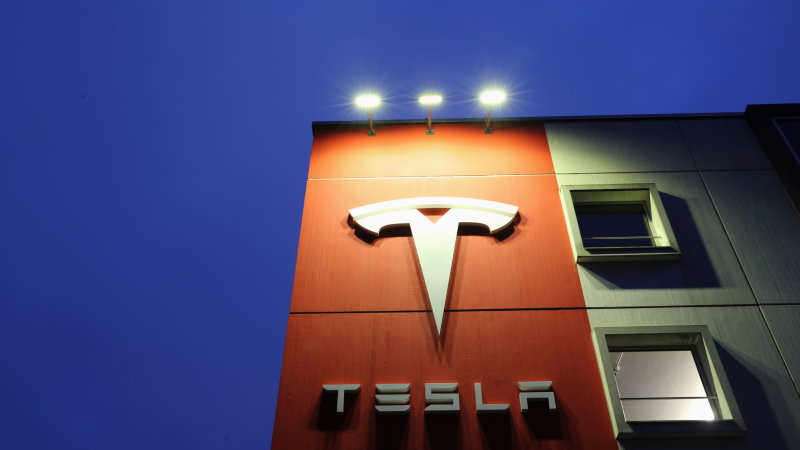DETROIT – Tesla and Wall Street made 2020 the year the US auto industry decided to go electric.
Tesla’s market cap soared above $ 600 billion, making the once-wobbly startup currently led by billionaire Elon Musk worth more than the five best-selling global automakers put together. The exclamation point came on Friday as Tesla rose to a record high in hectic trading ahead of the stock’s long-awaited entry into the benchmark S&P 500 index.
For 2021, all signs point to the industry accelerating its shift to electrification, a turning point historically as memorable as the launch of Ford’s moving assembly line for the Model T or General Motors’ bankruptcy in 2009.
Tesla’s rise came the same year that activist hedge funds and other investors increased pressure on companies to fight climate change. Evidence is mounting that more investors have concluded that the centuries-long dominance of internal combustion engines is coming to an end within a decade.
From London to Beijing to California, political leaders also embraced plans to start phasing out combustion-only vehicles as early as 2030. Pressure to reduce greenhouse gas emissions undermines the logic for significant new investment in internal combustion engines. Thousands of manufacturing jobs are currently linked to internal combustion in the United States, Great Britain, Germany, France, Japan and other countries.
Other strong forces have also shaken the status quo of the auto industry this year. The COVID-19 pandemic took away the sales and profits that incumbent automakers had counted on to fund methodical transitions to electric vehicles. China’s rapid recovery from the pandemic made an even stronger appeal for industry investment.
Will consumers connect?
This was the year GM Chief Executive Mary Barra and other top industry executives began reiterating Tesla’s Musk, saying the cost of electric vehicle battery could soon equate to internal combustion technology. Still, it remains to be seen whether consumers, particularly in the United States, are ready to say goodbye to petroleum-powered pickups and SUVs.
The best-selling vehicles in the United States remain large, petroleum-burning pickups. Demand for these vehicles prompted a recovery for Detroit automakers after the pandemic forced factories to close in the spring.
The best electric vehicle and battery manufacturers could develop models that match the cost of internal combustion as early as 2023, broker Bernstein wrote in a report.
“ICE game over with BEV ~ 2030,” wrote Bernstein’s auto analysts, using industry acronyms for internal combustion engine and battery electric vehicles.
The shift to electric vehicles is accelerating a parallel transformation from vehicles to largely digital machines that derive much of their value from software that powers rich visual displays and functions such as automated driving systems.
Across the industry, age-old manufacturers such as Daimler AG are trying to hire programmers and artificial intelligence experts.
The ability of software to manage autonomous powertrains, battery power flows and data streaming to and from vehicles is replacing horsepower as the measure of automotive engineering performance.
Tesla’s use of smartphone-style over-the-air software upgrades was once a unique feature of the Silicon Valley brand. In 2020, the best-selling model line in the United States, the Ford F-150 pickup, was redesigned and now offers over-the-air software updates, making the technology as mainstream as possible.
The pandemic and China
At the best of times, traditional internal combustion vehicles would face enormous costs and disruptions to their workforce to evolve into electric, software intensive vehicles. But the shock of the coronavirus pandemic gave manufacturers much less money and time to adapt.
Consultancy firm IHS Markit predicts that global vehicle production will not return to its 2019 level until 2023. Car manufacturers will have produced 20 million fewer vehicles by 2023 than they could have built had the output remained at the 2019 level.
“Only the most agile with a Darwinist spirit will survive,” said Carlos Tavares, the Peugeot SA chief who will lead the combined Peugeot and Fiat Chrysler when that merger is completed.
The pandemic also increased China’s importance to the industry’s future. That country’s rapid recovery from the pandemic strengthened the appeal of its huge market for auto investment, despite anti-Chinese rhetoric from US and European politicians.
China’s drive to reduce its dependence on petroleum is forcing automakers to shift investments to battery-powered electric and hybrid vehicles, and to refocus design and engineering activities into Chinese cities from traditional hubs in Nagoya, Wolfsburg and Detroit. Tesla said it will set up a design and research center in China.
Ola Kaellenius, Chief Executive of Daimler AG, put it bluntly in October: “We need to look at our manufacturing footprint and shift our production where it makes sense,” he said during a video call. “Last year we sold about 700,000 passenger cars in China. The second largest market is the US with between 320,000 and 330,000 cars. “
Reporting by Joe White
